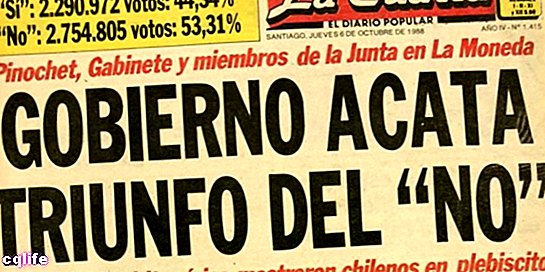- What is a plebiscite?
- What is a plebiscite for?
- Examples of plebiscites
- Differences between plebiscite and referendum
We explain what a plebiscite is, its origin, what it is for and various examples from history. Also, differences with a referendum.

What is a plebiscite?
A plebiscite is a political event of popular consultation, in which a specific matter is submitted to the decision of the majority through a public act of voting. It is a frequent political participation mechanism in the democratic governments (and occasionally in undemocratic ones), whose purpose is to give the people the opportunity to express their opinion on a matter of collective importance.
The origin of this word goes back to the Latin term plebiscitum, which could be translated as "decree approved by the plebs." To understand what that means, we must remember that in the Rome of the eighth century BC. C. free citizens were divided into two categories: patricians, who enjoyed full rights of political participation, and commoners (plebeii) foreigners stripped of political rights.
The latter were called that way because they formed "the mass" or "the majority" (plebs, in Latin), and only towards the 5th century BC. C. began to have greater political rights in the conduct of the Condition Roman, through its own political assemblies (the concilia plebis or plebeian councils), whose decrees they came to have the strength of law and they became known as plebiscites (plebiscitum), to distinguish them from patrician laws (leges).
But from the 3rd century BC. C. was achieved in Rome legal equality between commoners and patricians, thus transforming the concept of plebiscite. The latter was rescued by the democracy modern with its new sense of "consultation", practically synonymous with that of referendum.
What is a plebiscite for?
In modern democracy, plebiscites are part of the mechanisms for consulting the people, in which the sovereignty of the State. That is to say, these are ways of consulting the opinion of the majority regarding an event of a public nature that, given its importance, its significance or whatever its nature, deserves to be decided by the majority and not simply by the political representatives of the public powers.
However, plebiscites are not always final or binding, but are often merely consultative: the public powers seek the opinion of the people on a matter to orient themselves and know where to direct their steps, without the popular vote representing a final decision taken, but a guideline issued by the majority.
Thus, what things can or cannot be submitted to a plebiscite, in what way and on what terms, will always depend on the local or national legal framework, that is, on what the laws and the Constitution establish.
Examples of plebiscites

Some famous plebiscites in history were the following:
- The Chilean Independence Plebiscite of 1817. This was the first plebiscite of the history Latin America, which took place on November 15 of that year and submitted to the popular will the ratification (or not) of Chilean independence, defended by Commander Bernardo O'Higgins (1778-1842). The results were favorable to the independence of Spain and this in December was formally proclaimed.
- The Plebiscites of Schleswig of 1920. This is the name given to two popular consultations that, following what is established by the Treaty of Versailles that ended the First World War (1914-1918), he consulted the people regarding the establishment of the border between Germany and Denmark. Its name came from the fact that the consultation involved the inhabitants of the former Duchy of Schleswig.
- The Constitutional Plebiscite of Uruguay of 1980. On November 30 of that year, a constitutional reform was submitted to a vote of the majority that would allow the dictatorship civic-military perpetuation in power. However, 57.20% of voters preferred the "no" option, thus laying the foundations for the coming transition to democracy, with the free elections of 1984.
- The National Plebiscite of Chile on October 5, 1988. Occurred during the terrible mandate of General Augusto Pinochet (1915-2006), who ruled the country with an iron fist since 1974, was the event that marked the end of the dictatorship, when 54.71% of Chileans voted "no" to the continuation of the military government for a new period of eight years.
Differences between plebiscite and referendum
Both terms refer to mechanisms for democratic consultation, that is, for consulting the majority of the people to express themselves on a sensitive matter, between which there is no clear and explicit differentiation. In fact, the growing trend is to use them interchangeably, as synonyms.
However, in some laws and legal bodies, it is considered that the referendums are more formal consultations, and that therefore they can refer to constitutional and legislative matters, of great importance and hierarchy, thus establishing formal decisions taken by the majority. Instead, the plebiscites would come to be informal consultations, on territorial or community issues.
Said difference, it should be repeated, is relative and will always depend on the legal framework taken into consideration.
